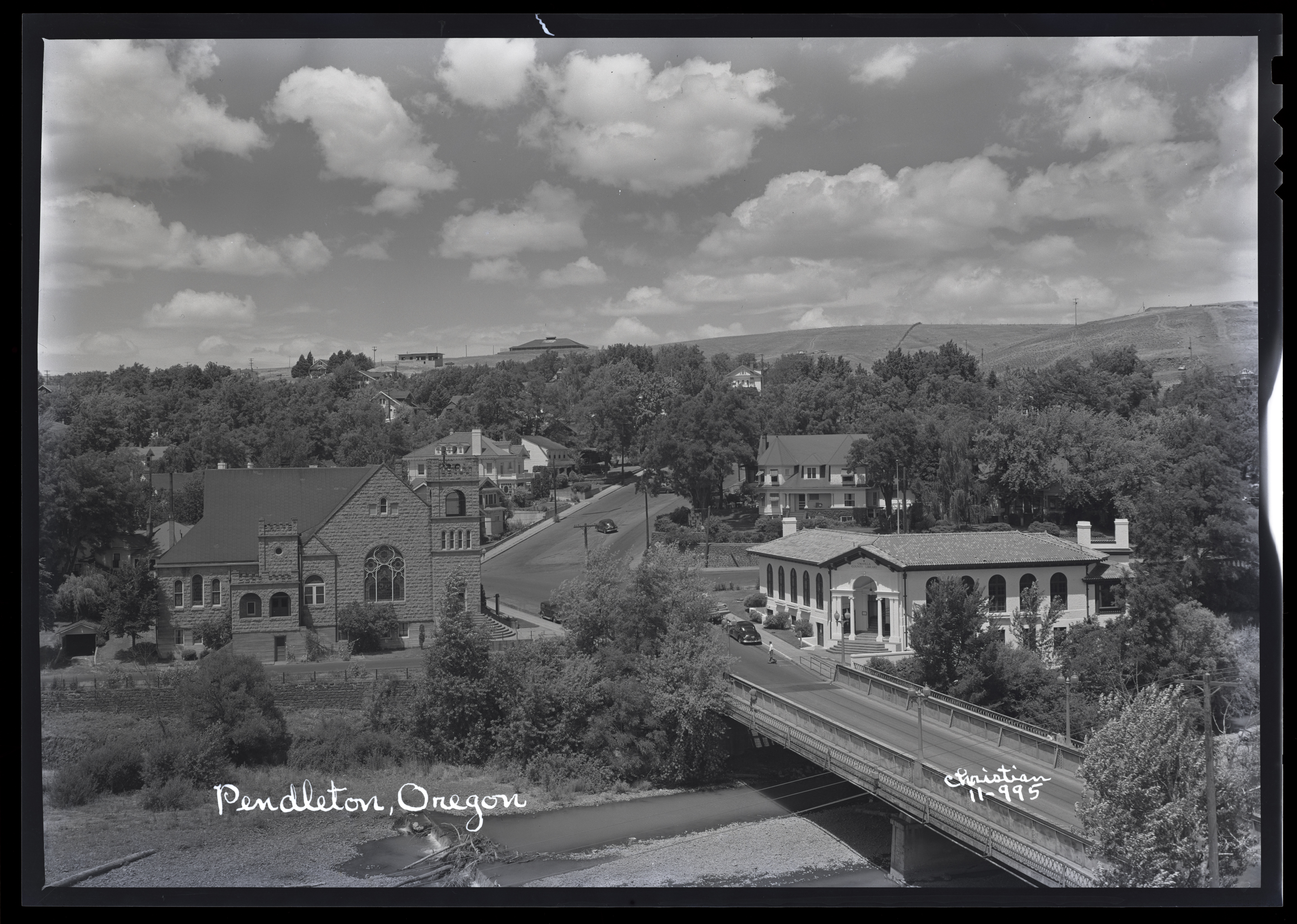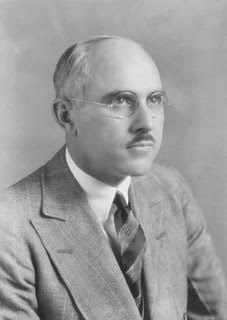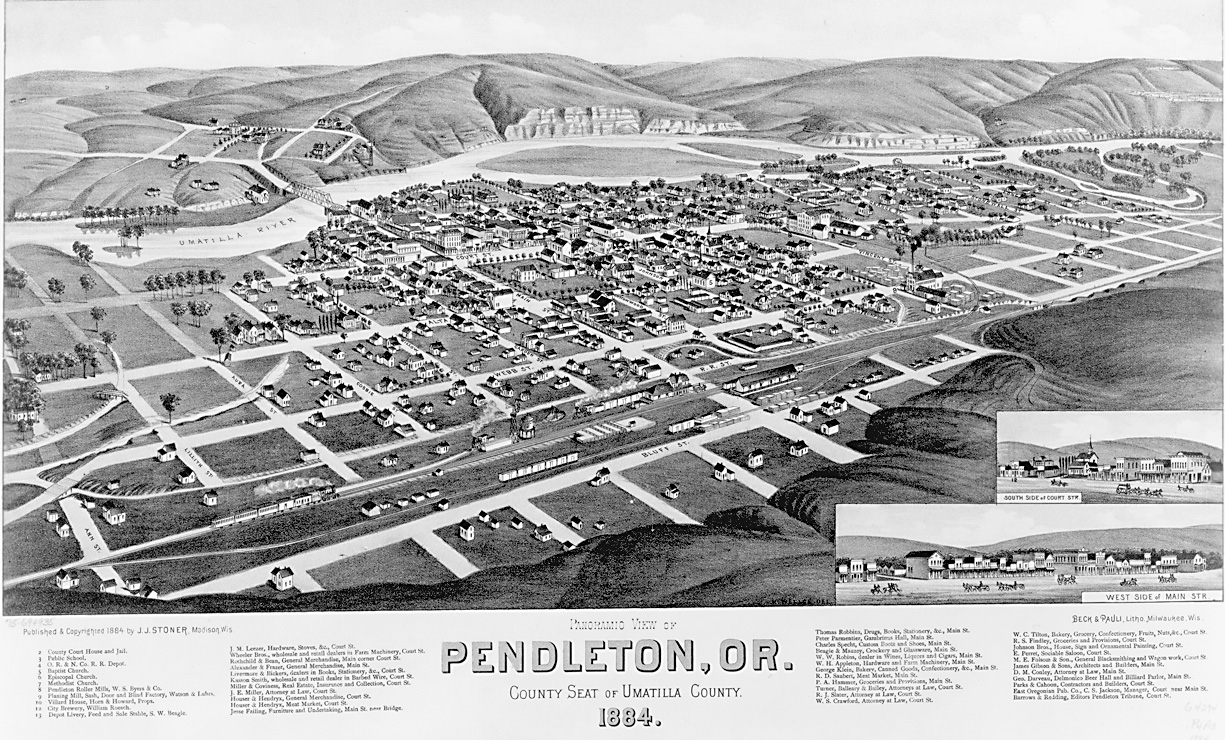The historic Umatilla County Library building in Pendleton was built in 1916 and was designed by Portland architect Folger Johnson, with local supervisory assistance from architect Raymond Hatch. The building is one of thirty-one Carnegie libraries in Oregon, realized as part of a nationwide endowment of libraries funded by industrialist Andrew Carnegie. Administration of the library was transferred in 1987 to the City of Pendleton; in 1996, the library moved out of its historic building into the renovated Helen McCune Junior High, where it shares space with City Hall. The Carnegie library building, which now houses the Pendleton Center for the Arts was listed on the National Register of Historic Places in 1997.
The lending library system in Umatilla County and a physical structure in which to house it were created in large part to the efforts of a group of committed Pendleton women who valued the role of books in rural life and who wanted a place of respite and communal exchange where farmers and local residents could gather. They wanted “ranch children everywhere to have story books to people their imaginations,” a 1921 issue of Good Housekeeping reported, “…ranch mothers to have fiction and poetry for relaxation…ranch fathers to have helpful books, dealing with the very problems they’re trying to solve alone.” They also wanted a building that was beautiful, welcoming, and “humanized,” and they determined that Portland architect Folger Johnson could fulfill their aspirations.
The Italian Renaissance-inspired building that Johnson designed brought a taste of Italy to eastern Oregon. During the late 1910s, he had spent two years studying architecture at the École des Beaux-Arts in Paris and traveling through Europe. It was a work by architect Filippo Brunelleschi (1377–1446 CE), renowned for his ingenious solution to doming the Florence Cathedral, that inspired Johnson’s design for the Umatilla library. Brunelleschi also had designed Folger’s inspiration for the Umatilla County Library building, the Pazzi Chapel (1443), considered to be a pure expression of the Renaissance ideals of harmony, clarity, and rationality.
The historic Umatilla County Library building is on a triangular piece of land adjacent to the Umatilla River in downtown Pendleton. Responding to the unusual site, Johnson chose to unite the tripartite building with a monumental pedimented portico that is strongly reminiscent of the Pazzi Chapel’s façade. Placed at the intersection of two wings of the building, this formal entrance to the library features Ionic columns and pilasters and spandrels that were originally outlined in color with contrasting stucco texture, not unlike the polychrome Florentine churches of the Middle Ages and the well-articulated buildings of the fifteenth and sixteenth centuries in central Italy.
Maintaining the Renaissance motif, two wings of Johnson’s V-shaped plan have five large arched windows. The third side has a single arched window with multipane rectangular glazing and a rounded reading room that links it to the wing facing the river. The reading room was originally designed as a porch, but the original screens were later replaced by glass. Johnson’s design included a small museum on the mezzanine to house a local collection of Native artifacts. Clay roof tiles, a stucco exterior, a classical entablature, and a cornice supported by corbels (decorated brackets) also echo Italian architecture.
Johnson was noted for the fine detailing of his interiors, and the Carnegie library in Pendleton is no exception. Classical molding embellishes rooms throughout the building, and multiple fireplaces were designed with classical features, adding visual and physical warmth to the public building. A wooden balustrade adorns the reading room.
The library was an immediate success when it opened in 1916 and quickly rivaled the Portland library in the number of books in its collection. In addition to lending books, the Umatilla County library building, with its basement auditorium and story-hour room equipped with a baby grand piano, became a locus for cultural activities, including theatrical performances and civic meetings. The Pendleton Center for the Arts carries on the tradition of bringing community residents together through its many art-related activities.
-
![]()
View of the Umatilla County Library, Pendleton, 1925..
Oregon Historical Society Research Library 010459
-
![]()
Pendleton Center for the Arts, 2009.
Courtesy Ian Poellet
-
![]()
Pendleton, Oregon. Umatilla County Library building is on the right..
Gilliam Portrait Studio and Camera Shop negs., 1930-1970; Or. Lot 1275; Box 1; 11-995. Oregon Historical Society Research Library
-
![]()
The Umatilla County Library, Pendleton, 1935..
Oregon Historical Society Research Library 010552
-
![]()
Umatilla County Library.
Courtesy University of Oregon Libraries
Related Entries
-
![Carnegie Libraries in Oregon]()
Carnegie Libraries in Oregon
Of the 1,679 public library buildings funded in the United States by An…
-
![Folger Johnson (1882–1970)]()
Folger Johnson (1882–1970)
Architect Folger Johnson contributed to the cultural vitality of Portla…
-
![Pendleton]()
Pendleton
Pendleton, a city of 17,107 in the 2020 census, sits in the foothills o…
Related Historical Records
Map This on the Oregon History WayFinder
The Oregon History Wayfinder is an interactive map that identifies significant places, people, and events in Oregon history.
Further Reading
"Specifications of New Library are Considered." Pendleton East Oregonian, July 9, 1915.
Monroe, Anne Shannon. "When Women Will." Good Housekeeping 73.5 (November 1921): 73-74, 105-106, 109.








